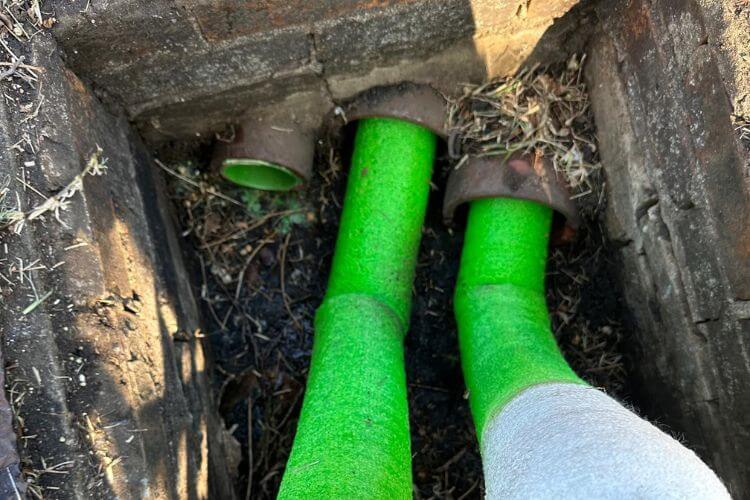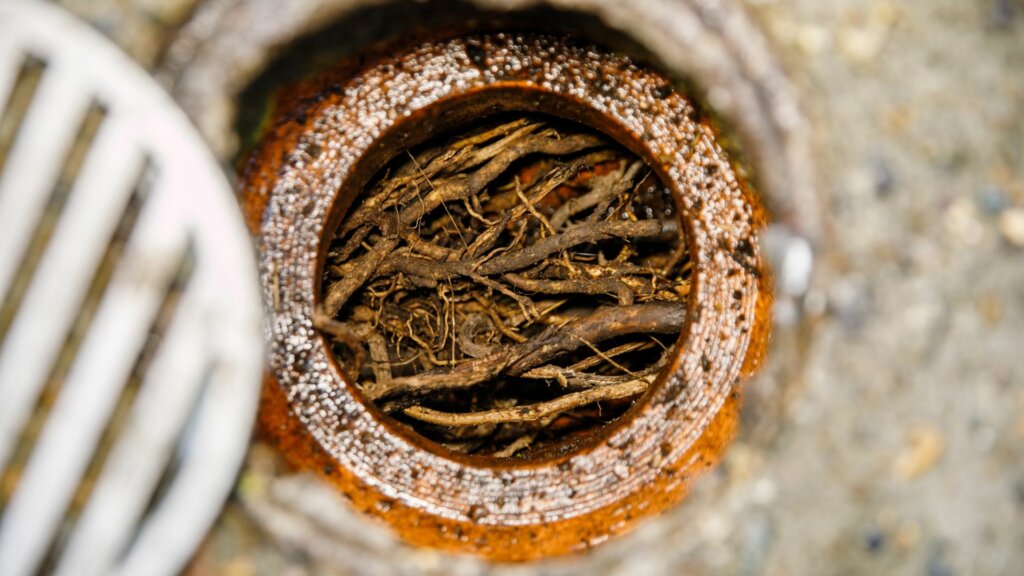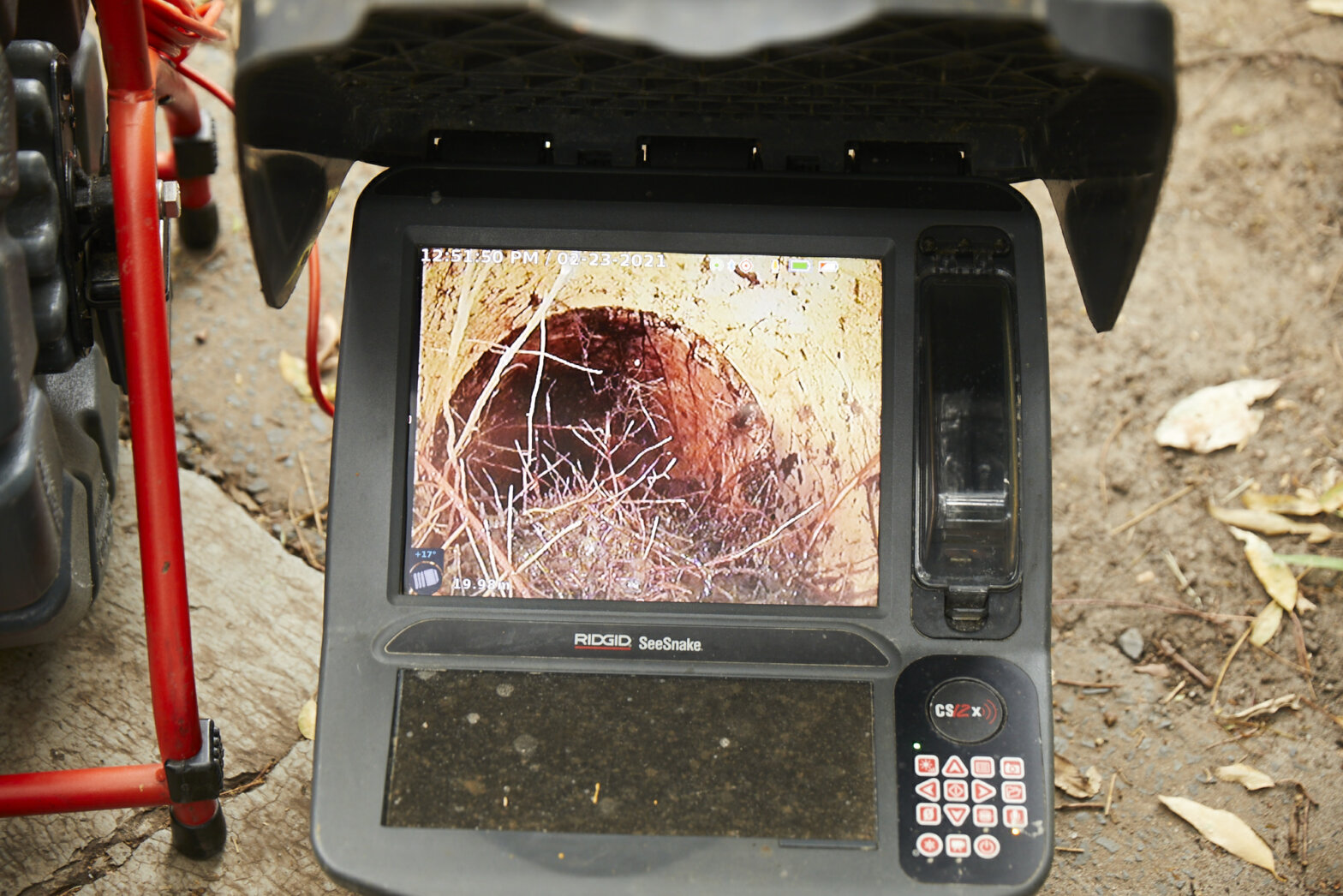If you’re a long-term homeowner, chances are you’ve succumbed to a plumbing issue due to tree root intrusion. You’re not alone—it’s one of the most common causes of recurring plumbing issues, especially in older properties.
While traditional pipe repair methods often involve digging up the yard, creating a mess, and causing significant disruption, pipe relining is an innovative, trenchless technology that repairs damaged pipes without excavation. As a result, pipe relining solutions are becoming increasingly popular, let’s explore why.
What Causes Tree Root Damage in Stormwater and Sewer Pipes?
As the saying goes, nature finds a way. Roots are naturally drawn to the moisture in sewer lines and drainpipes, leading to cracks, blockages, and costly damage to your plumbing system.
This is especially prevalent in older pipe systems that are often made from materials like clay, cast iron, or concrete and are particularly prone to damage from tree roots. Over time, these materials naturally corrode and deteriorate. Eventually, cracks and gaps form, making it easier for roots to penetrate the pipes.
Additionally, as trees grow, older broken pipes are far more likely to experience recurring blockages, leaks, and even complete collapses.
You will want to prevent such an issue to avoid costly repairs.
What is Pipe Relining?
Pipe relining creates a seamless, durable lining within the existing pipe. Relined pipes are highly resistant to future root intrusion. As mentioned, this modern pipe lining solution is gaining popularity among homeowners and property managers for its long-lasting results, minimal disruption, and cost-effectiveness in addressing tree root damage.

How Pipe Relining Solves Tree Root Damage
Pipe relining offers a solution to invasive tree roots by creating a seamless, durable lining within the existing pipe that blocks roots from penetrating in the future. This trenchless technology not only repairs the damage but also prevents recurring issues—all without the need for disruptive excavation.
Here’s how the five-step pipe relining process works:
- Inspection and Diagnosis: A CCTV camera is used to inspect the damaged pipe, identifying the extent of tree root intrusion and structural issues.
- Clearing the Pipe: High-pressure water jets clear out blocked pipes of tree roots, debris, and any obstructions, leaving the pipe clean for relining.
- Lining Installation: A resin-coated liner is inserted into the pipe and positioned precisely over the damaged areas.
- Curing the Liner: The liner is inflated and cured in place, hardening to form a seamless, watertight pipe within the old one.
- Final Inspection: Another CCTV inspection ensures the relined pipe is flawless and ready for long-term use.
This innovative new solution avoids the mess of digging up your yard or driveway. This offers a faster, cleaner, and more cost-effective solution for your tree root damage.
What is the Difference Between Traditional Pipe Replacement Methods and Relined Pipes?
Traditional pipe replacement methods often involve extensive excavation to access and replace damaged pipes. This process is not only time-consuming but also disruptive, not to mention ugly. It can tear up gardens, driveways and, in some cases, even sections of your house.
Conversely, where traditional pipe repair works from the outside in, pipe relining works from the inside out. It solves these issues with a modern, trenchless approach that requires minimal digging.
Key differences include:
- Cost: Traditional methods can be significantly more expensive due to labour, equipment, and restoration work. Relined pipes eliminate the need for these added expenses, offering a more cost-effective solution.
- Disruption: Excavation disrupts landscaping and property structures, whereas pipe relining uses a single access point, leaving your property intact.
- Environmental Impact: Pipe relining has a smaller environmental footprint, as it avoids waste from discarded pipes and minimises damage to surrounding ecosystems.
- Time Efficiency: Relining is faster, often completed in just a few days compared to the weeks required for traditional methods.
- Durability: Relined pipes form a seamless, root-resistant structure within the old pipe, offering long-lasting protection against future damage.
By choosing pipe relining for tree root damage, you get a solution that is more efficient, eco-friendly, and less intrusive.
Key Benefits of Pipe Relining for Tree Root Damage

The key benefits of pipe relining are all about providing a long-lasting, efficient, and eco-friendly solution to tree root intrusion.
Durability and longevity of relined pipes
Relined pipes create a seamless, root-resistant barrier that reinforces the pipe structure for decades.
Cost-effectiveness over time
With fewer repairs and no need for excavation, relined pipes save money in the long term.
Eco-friendliness and reduced waste
The trenchless method avoids generating waste from old pipes while preserving surrounding landscaping, offering a more environmentally friendly solution.
Faster installation times
Pipe relining is typically completed in a matter of days, minimising downtime and disruption. Conversely, trading pipe repair or replacement can take weeks.
Who Can Benefit from Pipe Relining?
Just about any stand-alone homeowner can benefit from pipe relining—it’s an efficient solution. However, owners of older homes are likely to benefit the most due to reasons previously discussed.
If you find you have wear and tear on your sewer pipes, stormwater drains, and other underground systems, then your home’s plumbing is an excellent candidate for pipe relining. This is especially so if the materials are made from clay, PVC pipes, or cast iron.
The main way to know if you benefit is if you’re dealing with of the following:
- Recurring or severe blockages
- Tree root intrusion
- Ageing pipes
Pipe relining will offer you a non-invasive, long-lasting solution. Additionally, it’s ideal for properties where excavation would cause significant disruption, such as those with landscaped gardens or built-over structures.
If this is a concern for you, then strongly consider pipe relining.
Why Are Tree Root Systems Attracted to Pipes?
As previously touched upon, tree roots are naturally drawn to the water and nutrients flowing through pipes. This is especially so when there are tiny cracks or joints in older pipes. The holes release vapour, which acts like a tractor beam, drawing roots toward the source. Once inside, the roots continue to grow, causing blockages and damage over time.
Preventing Future Tree Root Intrusion
To keep relined pipes in top condition, there are a few steps you can take, including scheduling regular inspections and ensuring proper drainage to prevent debris build-up. Avoid planting larger trees with invasive root systems near pipelines or opt for shrubs or plants with less aggressive roots instead.
Additionally, adding a root barrier between trees and pipes can also help reduce future risks. If prevention is too late for your tree root-contaminated piping, reach out to our friendly and professional team for pipe relining solutions.
We’ve dealt with countless plumbing problems just like yours, so give the team at The Relining Company a call today and let’s get your plumbing back to its best.
Back to Top